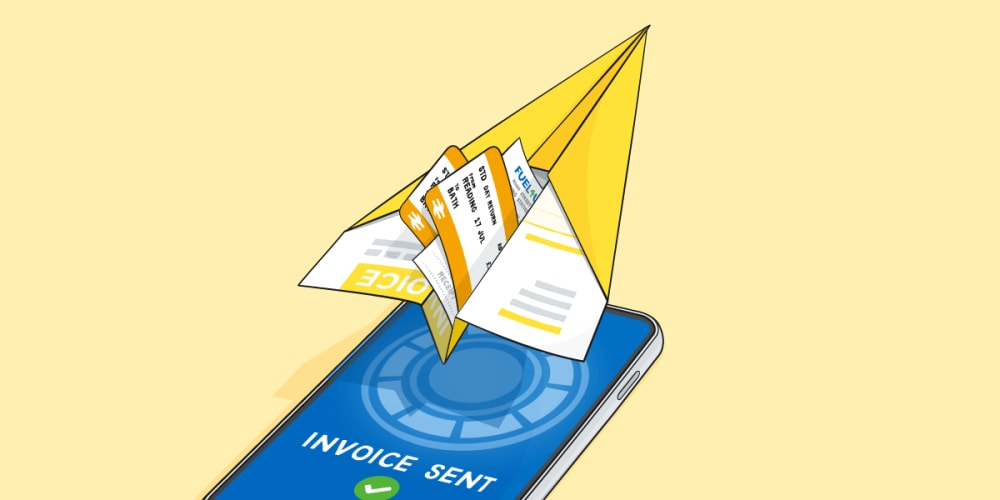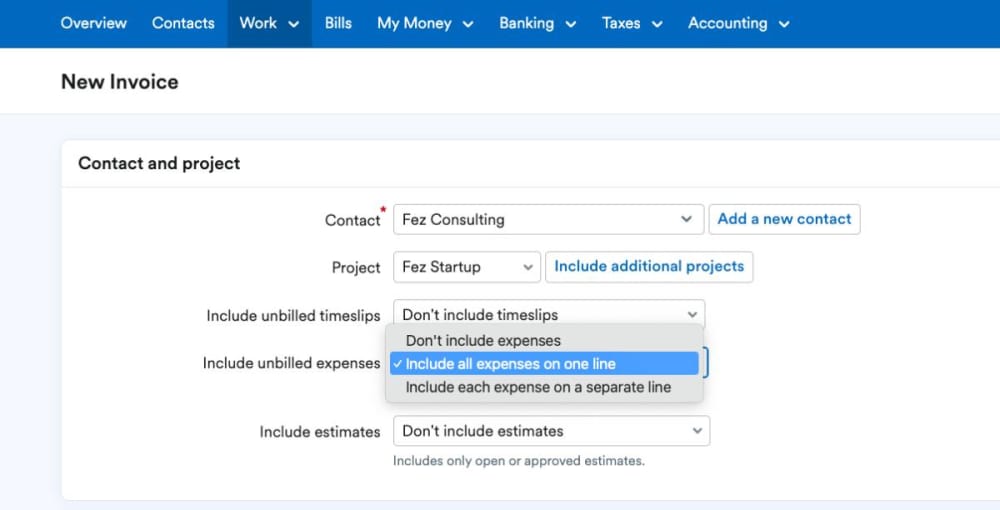How to invoice your clients for expenses

As every small business owner knows, there’s a huge variety of costs that you might incur in the process of supplying your goods or services to a customer. And while you can take these into account when setting your fee or daily rate, you might want to separate out some of the additional expenses you’ve taken on for your client, especially if they’re out of the ordinary.
Here’s a super short recap of what you need to do to add expenses to your invoices.
How to add an expense to an invoice
If you’re not registered for VAT
If your business isn’t registered for VAT, invoicing your clients for expenses is often as simple as adding a line on an invoice. In this situation, you should include both the price of the product or service you delivered and the expense as separate line items on the invoice.
It’s up to you (and your client) whether you group all the expenses in one line or separate out each one individually.
Make sure that you’ve agreed any expenses with the client in advance, so they know what to expect when they receive the invoice.
If you’re registered for VAT
If your business is registered for VAT and you want to invoice a client for a cost, you will have to charge VAT to your client on that expense (unless it counts as a disbursement).
You’ll need to charge the usual VAT rate for your product or service, even if the item had a different VAT rate when you bought it.
For example: if you stay in a hotel that costs £120 + VAT while visiting a client to provide a training session, you could simply add the £120 + VAT as a new line on your invoice.
If you buy an item that is zero-rated for VAT, such as a train ticket, you’ll still need to add VAT to the cost when invoicing your client, typically at the standard rate. This means if you want to invoice your client for the full cost of a train ticket that cost you £50, you will need to charge them £60 (£50 plus 20% VAT). This is because when you recharge the cost to your client, you are the one supplying the service to them (as opposed to the train company supplying the service to you).
If your client is also registered for VAT, they might be able to claim back the VAT you charged them when they file their VAT return for the quarter.
Note: If you’re expensing an item you’ve bought for your client to use (for example if you’re a plumber buying a sink for a customer’s bathroom renovations), this might be a disbursement for VAT purposes. Don’t worry, you can still add this to your invoice just like any other expense… but it does get a little more complicated if you’re VAT-registered. Take a look at HMRC’s guidance on VAT and disbursements, and speak to your accountant if you’re unsure about anything VAT-related.
How can I make invoicing for expenses quick and easy?
FreeAgent makes tracking your expenses quicker and easier. You can upload receipts or snap them on the go, link them to specific client projects and then add them to your invoices at the click of a button.

Give FreeAgent a go and start sending invoices today with our 30-day free trial.
Originally published
Last updated
Disclaimer: The content included in this blog post is based on our understanding of tax law at the time of publication. It may be subject to change and may not be applicable to your circumstances, so should not be relied upon. You are responsible for complying with tax law and should seek independent advice if you require further information about the content included in this blog post. If you don't have an accountant, take a look at our directory to find a FreeAgent Practice Partner based in your local area.


